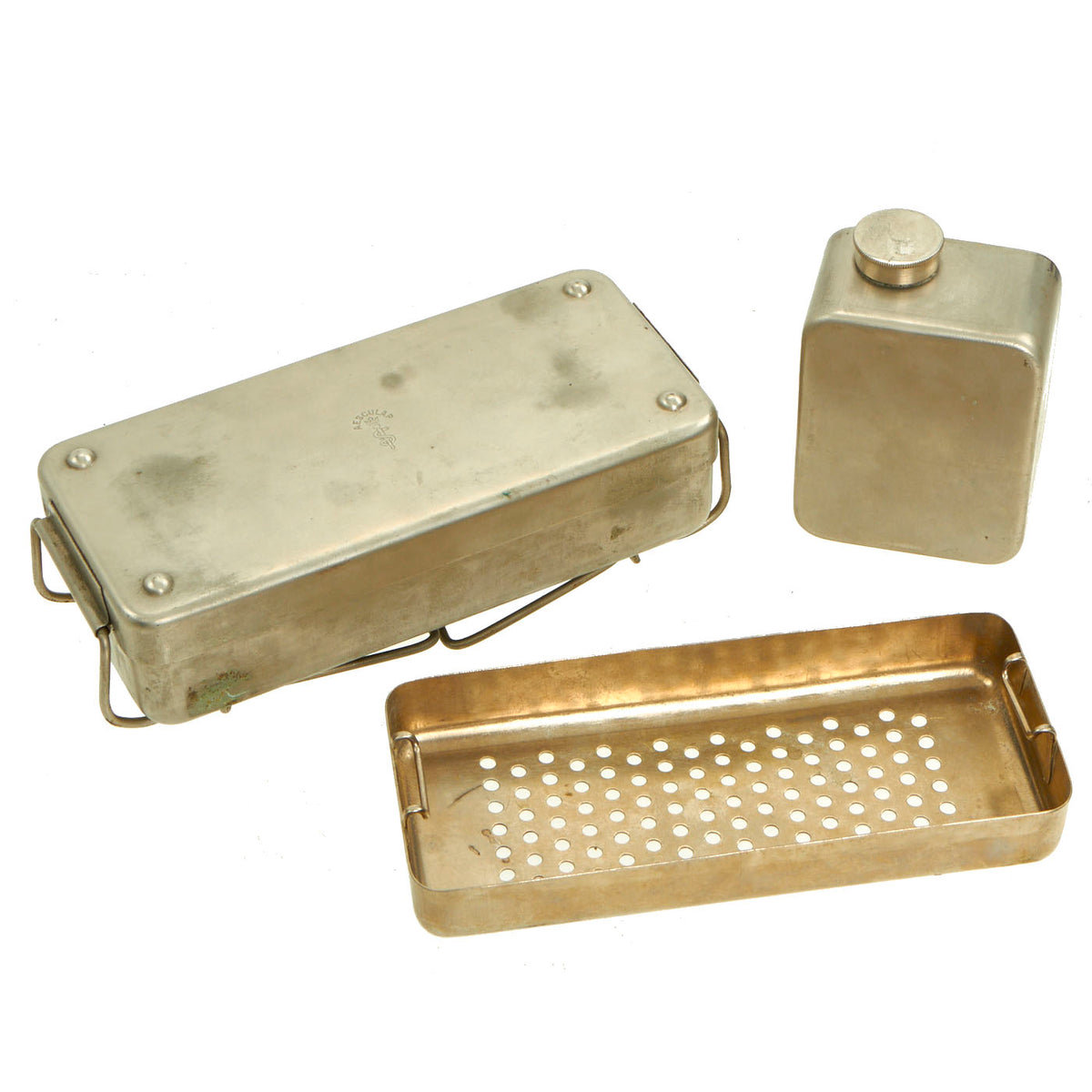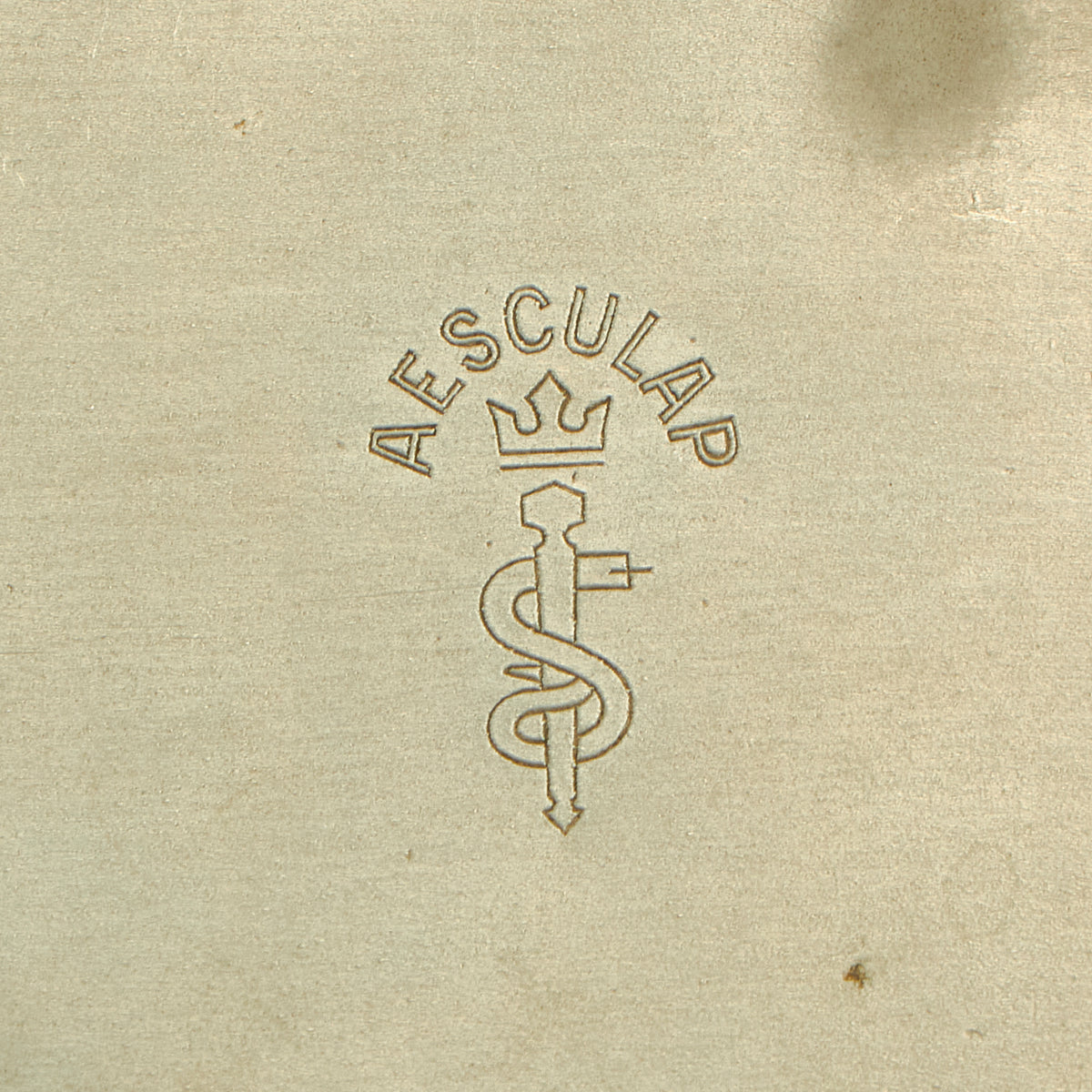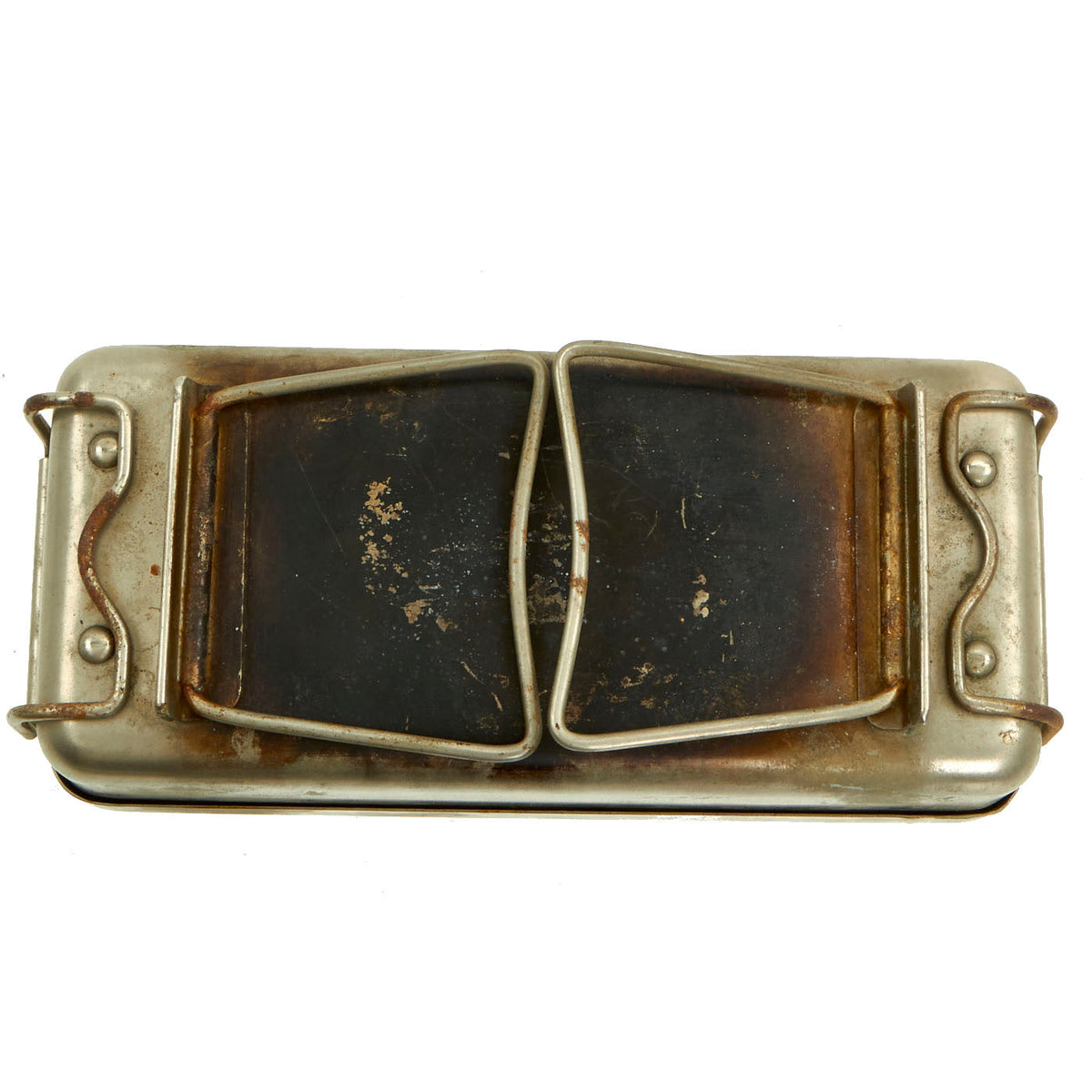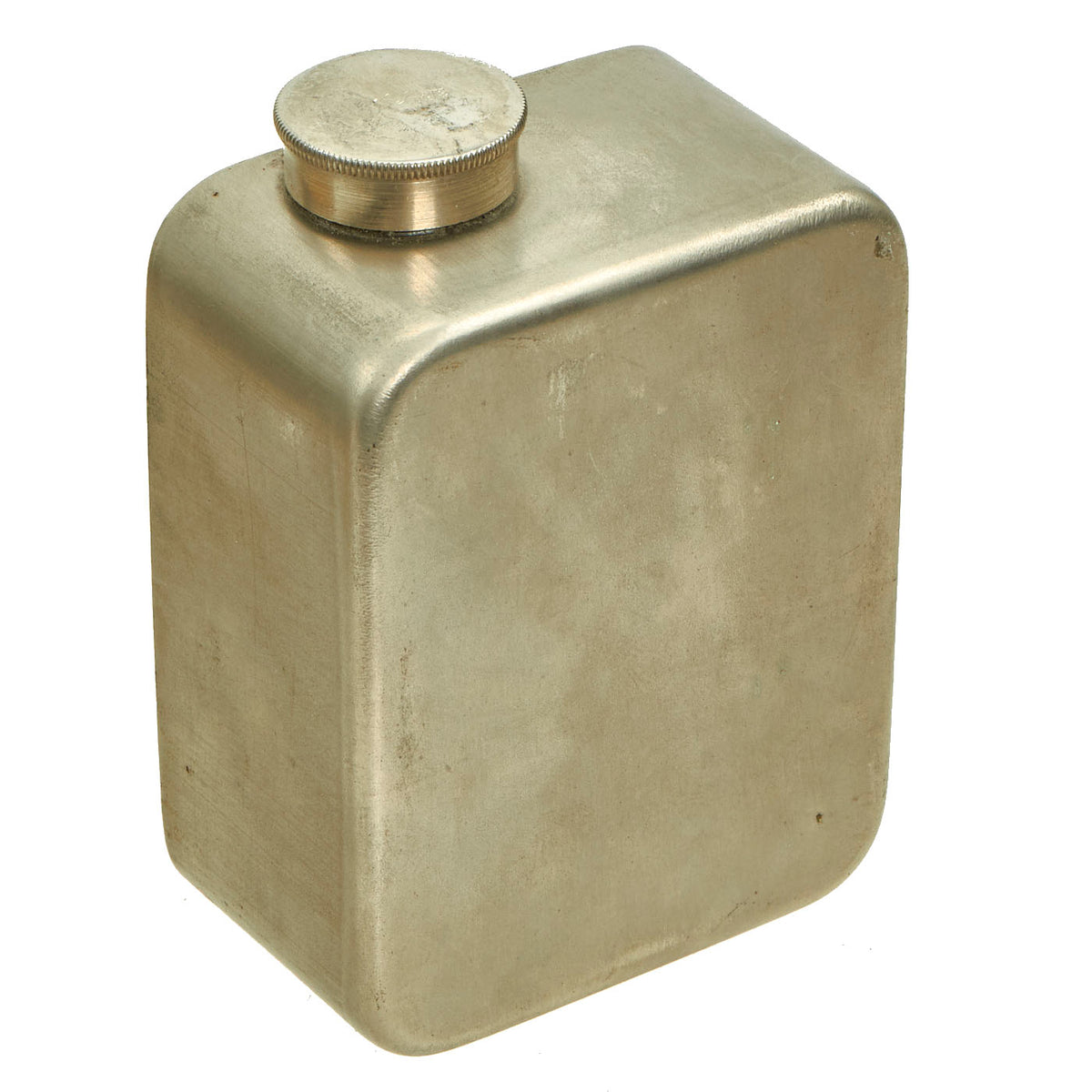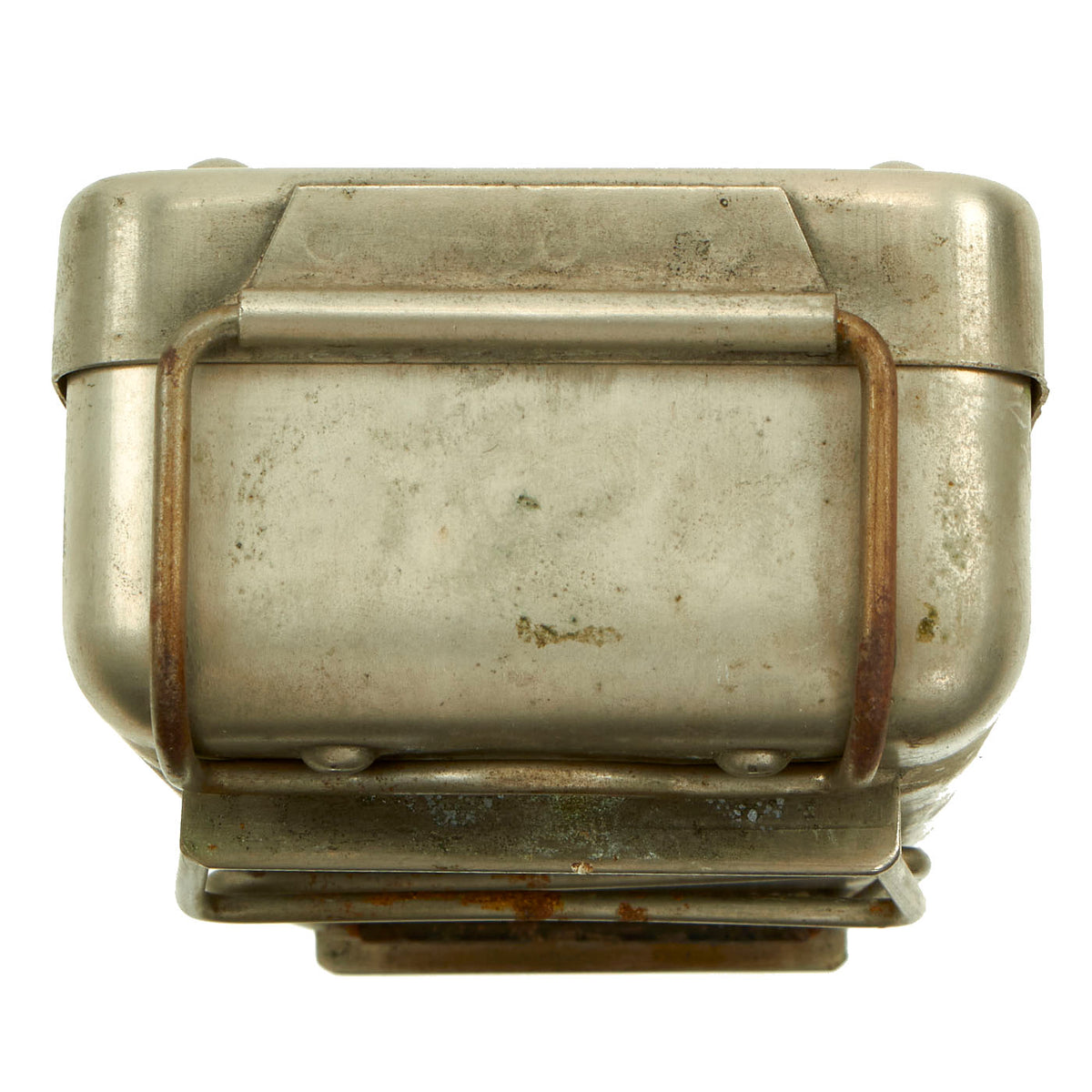Original German WWII Field Medic Surgical Instrument Sterilization Kit by AESCULAP Original Items
$ 95,00 $ 47,50
Original Item: Only One Available. German medical items are somewhat of a rarity and are hard to come by. This is a small German WWII field medical instrument sterilization set, that was manufactured by the well known and respected medical company AESCULAP (B.Braun) of Tuttlingen.
B. Braun is a German medical and pharmaceutical device company, which currently has more than 63,000 employees globally, and offices and production facilities in more than 60 countries. Its headquarters are located in Melsungen, in central Germany. The company was founded in 1839 and is still owned by the Braun family.
B. Braun’s Aesculap division, which includes Aesculap, Inc., its American unit, is a manufacturer of surgical equipment. It derives its name from Aesculapius, the Greek and Roman god of medicine and physicians. It manufactures a range of equipment including sutures, handheld surgical instruments, implants, and electrosurgical devices and powers systems. It also provides training to healthcare workers through its Aesculap Academy.
Aesculap was founded in 1867 in Tuttlingen, Germany by Gottfried Jetter. During World War II, Aesculap manufactured and supplied needle tattoo stamps with which the NSDAP party marked inmates at the KZ camps.
This portable sterilization kit features a locking lid, basin, instrument strainer/tray and an empty liquid container inside which was more than likely used to store alcohol or another sterile solvent. This stainless steel kit was used to ensure the sterilization or equipment and to properly store them as well.
This kit shows signs of definite use. There are burn marks on the bottom, indicating that fire was used to help the sterilization process of the medics instruments. There is minor surface rust on the handles and rub marks on the exterior of the kit.
Comes ready to be paired with your field surgeon kits and displays!
History of Instrument Sterilization
Instruments that come in contact with the body during all surgical procedures and many non-surgical procedures must be free of all microbial elements. This is to ensure that the risk of infection is kept to a minimum.
Throughout history different methods were adopted using materials that were available at that time. In 3000 BC the Egyptians used pitch and tar as antiseptics. In later years the fumes from burning sulfur were found to cleanse objects of infectious material.
In 1680 a French physicist, Denis Papin invented a pressure cooker that would trap boiling water, convert it into steam, and was found to cleanse objects by cooking them. This device was further improved upon during the next two hundred years and it became possible to additionally sterilize linens, dressings, gowns using steam. Two major contributions to the art of sterilization came in the 1860’s when the French chemist and microbiologist Louis Pasteur wrote extensively on how germs cause disease and the English physician, Joseph Lister, developed a technique that used carbolic acid as a spray to disinfect instruments. During the late 1800’s steam sterilization became much more widespread. Surgical instruments were also being made out of materials that were better able to withstand high levels of heat. This allowed them to be processed at higher temperatures and were being made with smooth surfaces which allowed for more thorough cleaning.
During the 1900’s various improvements were introduced. This included sterilization with steam, irradiation, with glutaraldehyde. More recently, sterilization of instruments can be achieved using high temperature / high pressure, ultraviolet light, and the most commonly used chemical for sterilization is ethylene oxide. It can be used on almost all instruments, both metal and non-metal.
The importance of cleanliness when it involves objects that come in contact with the body cannot be stressed enough. It was recognized in ancient times and improvements are still evolving today for the safety of patients.
Fast Shipping with Professional Packaging
Thanks to our longstanding association with UPS FedEx DHL, and other major international carriers, we are able to provide a range of shipping options. Our warehouse staff is expertly trained and will wrap your products according to our exact and precise specifications. Prior to shipping, your goods will be thoroughly examined and securely secured. We ship to thousands clients each day across multiple countries. This shows how we're dedicated to be the largest retailer on the internet. Warehouses and distribution centres can be located throughout Europe as well as the USA.
Note: Orders with more than one item will be assigned a processing date depending on the item.
Before shipping before shipping, we'll conduct a thorough inspection of the items you have ordered. Today, the majority of orders will be delivered within 48 hours. The delivery time will be between 3-7 days.
Returns
The stock is dynamic and we cannot completely manage it because multiple stakeholders are involved, including our factory and warehouse. So the actual stock may alter at any time. It's possible that you may not receive your order once the order has been made.
Our policy is valid for a period of 30 days. If you don't receive the product within 30 days, we are not able to issue a refund or an exchange.
You can only return an item if it is unused and in the same state as the day you received it. You must have the item in its original packaging.
Related products
Uncategorized
Uncategorized
Uncategorized
Uncategorized
Uncategorized
Uncategorized
Uncategorized
Uncategorized
Australian WWII Owen MK1 Machine Carbine SMG Custom Fabricated Replica with Sling Original Items
Uncategorized
Uncategorized
Band of Brothers ORIGINAL GERMAN WWII Le. F.H. 18 10.5cm ARTILLERY PIECE Original Items
Uncategorized
Uncategorized
Uncategorized
Uncategorized
Uncategorized
Angolan Rebel 1970s era 60mm Inert Display Mortar from Angolan Civil War Original Items
Uncategorized
Uncategorized
Uncategorized
